The Independent's journalism is supported by our readers. When you purchase through links on our site, we may earn commission.
It’s time to exorcise the ghosts of our great railway stations
Closed ticket offices, broken card machines, monstrous redevelopments, the chaotic HS2 experiment... it wasn’t always this way. Jonathan Glancey revisits the splendours of our rich train history – and explains how we can make it all special once again
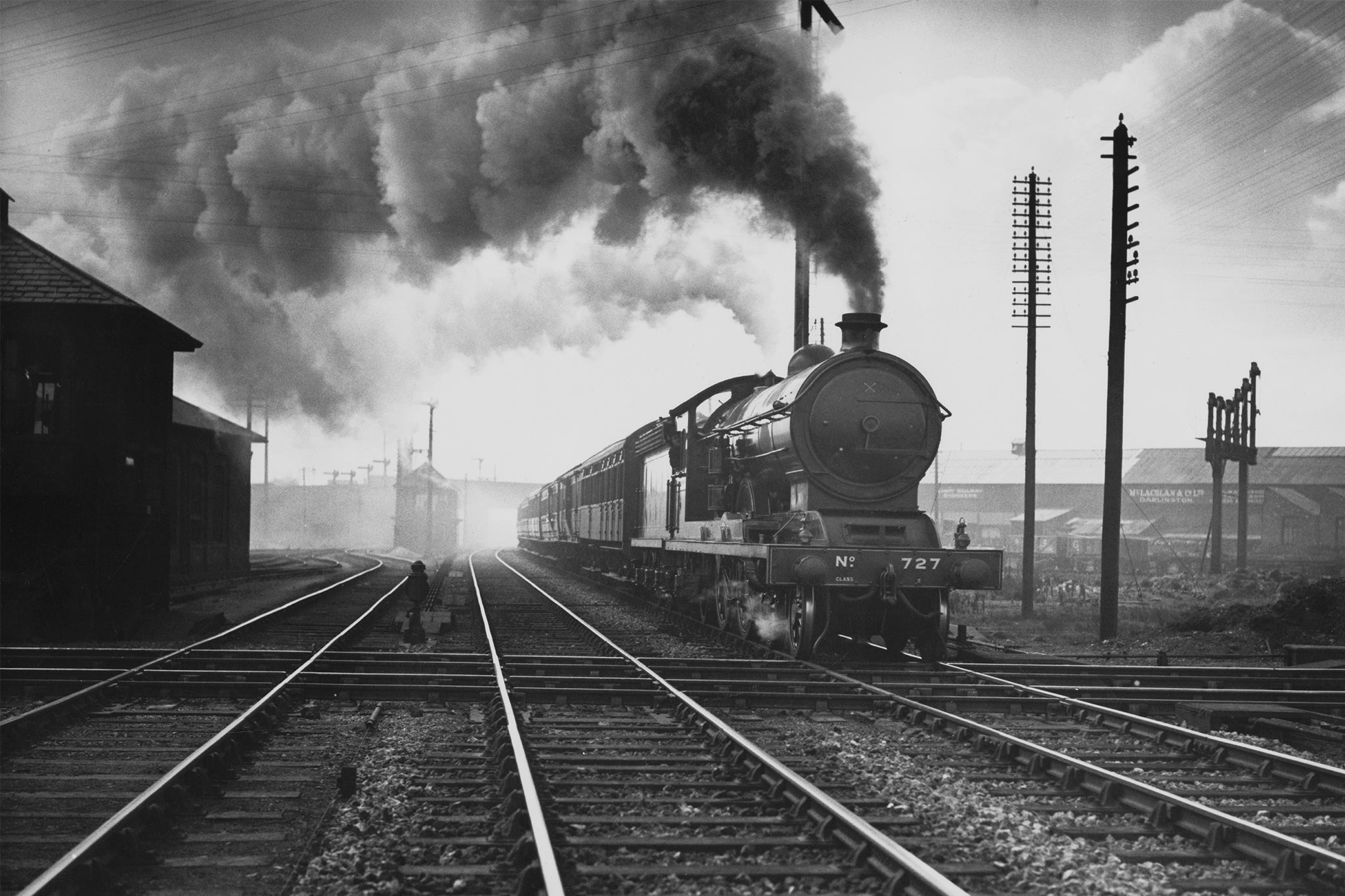
If you see something which doesn’t look right, speak to a member of staff or text the British Transport Police on 61016. See it. Say it. Sorted.”
Oh, the temptation. But where to begin?
Those cavernous and catastrophically expensive HS2 portals bored into the Chilterns and Warwickshire countryside that are currently causing the prime minister a major headache and that may or may not lead one day from London to Birmingham and ports of call north? That closed ticket office. The “out of order” ticket machine. Those locked platform lavatories. The lack of a cafe. No newsagent. No waiting room. No space to park the car. A conspicuous absence of station staff. And, where the willow-herbed goods sidings and abandoned engine shed once stood, gloating new cul-de-sacs of cheapjack housing that look plain wrong.
This, all too often, is your “station stop”. Adlestrop without the charm, hissing steam and Edward Thomas’s epiphany of songbirds.
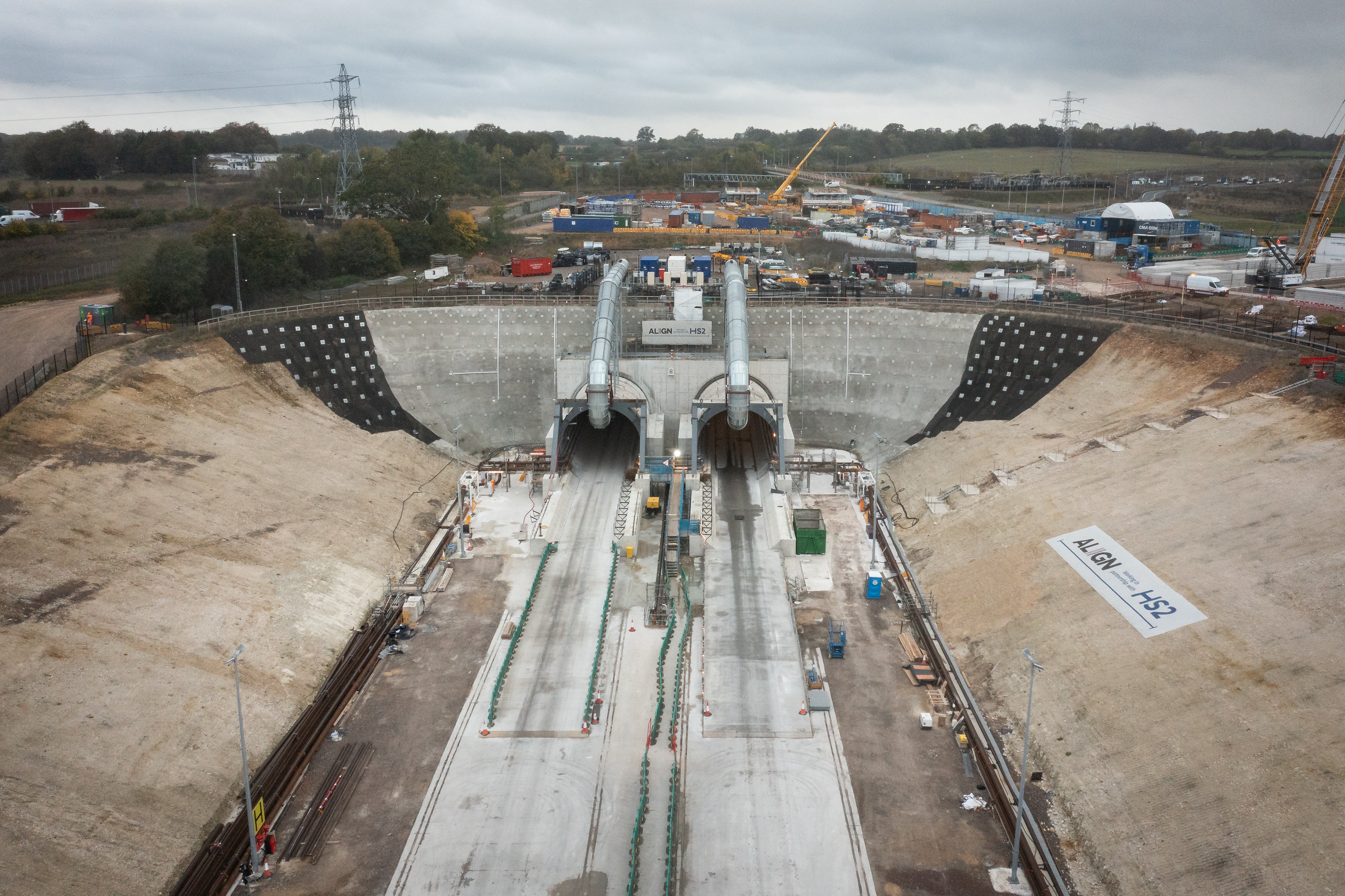
There are, of course, glorious railway stations the length and breadth of Britain. You will have your own special favourites. Wemyss Bay, that airy Caledonian Railway terminus on the coast of the Firth of Clyde with ferries to Rothesay on the Isle of Bute is surely high on any rail traveller’s list.
Or, what about Rannoch with its tearoom, or remote Corrour with its attendant Station House restaurant and B&B, these two West Highland Line stations set in landscapes that might have challenged Turner?
Or Evesham. York. Pitlochry. St Pancras. Railway stations are truly among Britain’s architectural gems, at their finest the civic chapels, parish churches and cathedrals of the railway age. Those cared for by bodies like the Railway Heritage Trust are blessed.
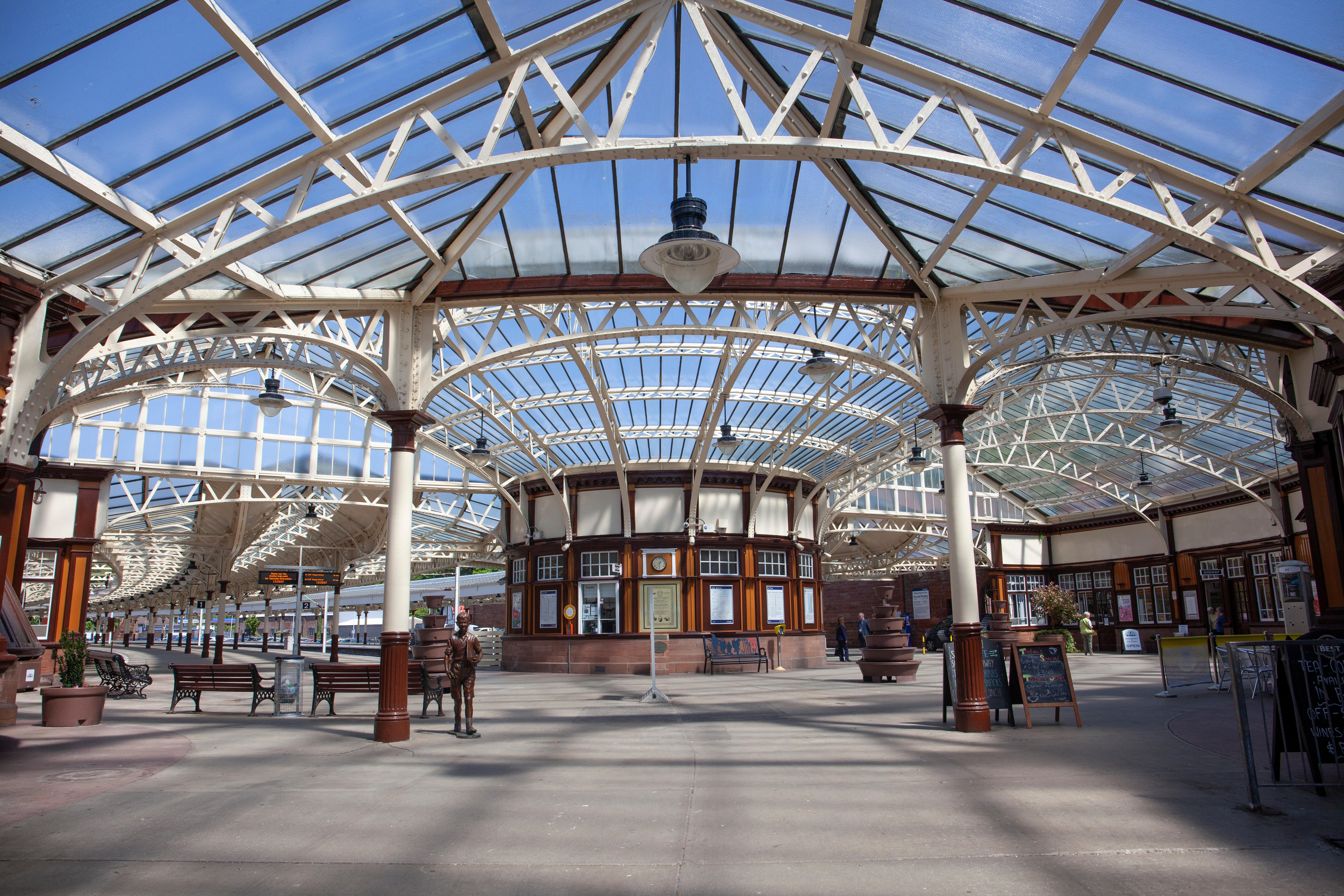
So many others, though, are excommunicated ghosts of railway glories past. Skeletally staffed. Aesthetically challenged. Emotionally stifled with precious little of the sense of community that once made them the piston-pounding hearts of our towns and villages.
‘A ghost of stations past’
This year marks the 70th anniversary of The Titfield Thunderbolt, a sentimental Ealing Studios film concerning Somerset villagers fighting for the survival of their Western Region branch line. Try watching the opening sequence. A majestic West Country Pacific, 34043 Combe Martin, canters across the Midford viaduct on the much-missed Somerset and Dorset line – closed in 1966, steam till the end – as the Titfield train spins along below, its 14XX class Great Western tank engine whistling to call local townsfolk to the station. On cue, down they hurry, ladies in floral frocks and city gents in bowlers who will doubtless change further up the line for Bristol or London-bound expresses.
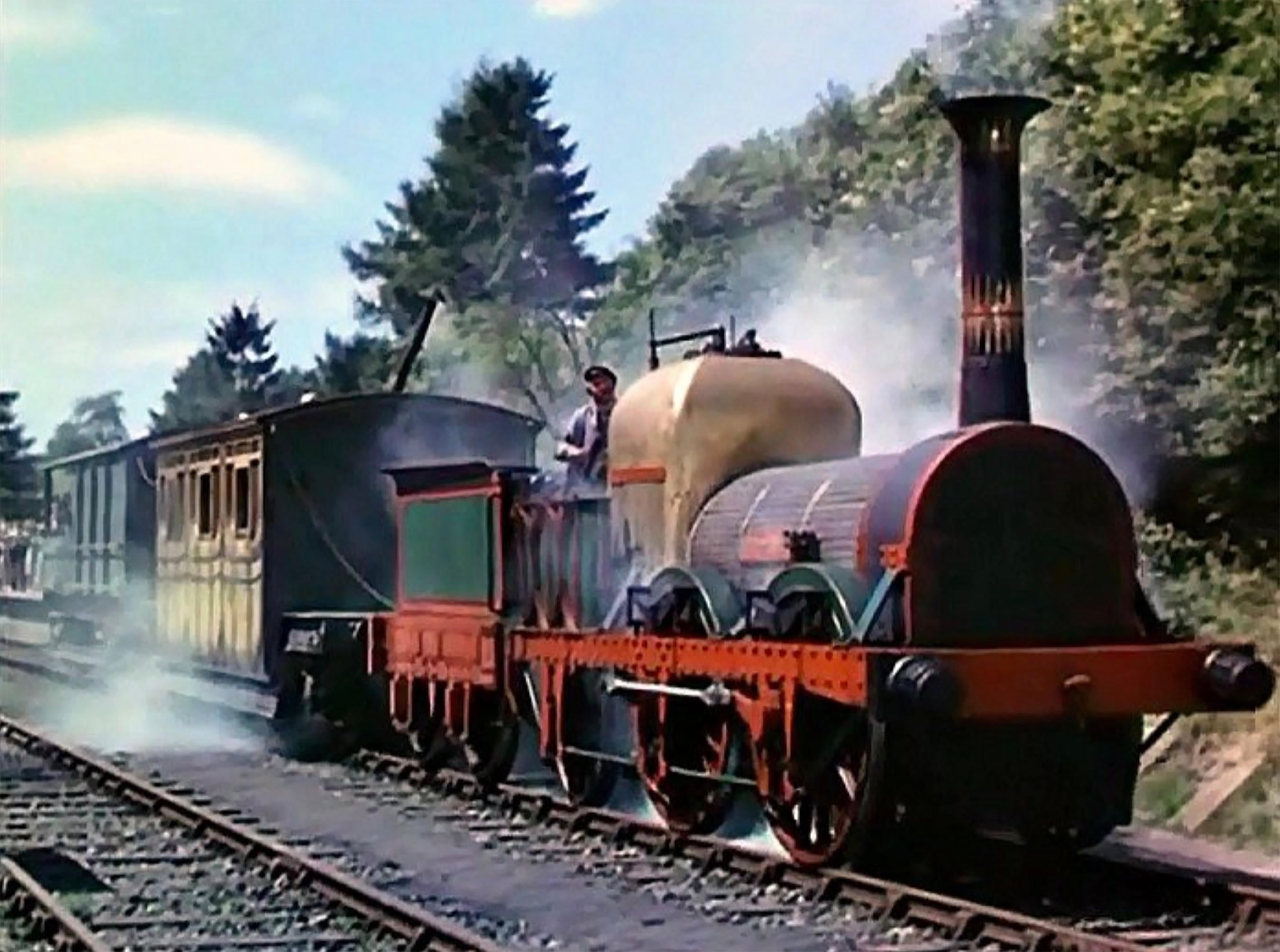
The town is idyllic, Freshford some miles south of Bath standing in for Titfield. Filmed in Technicolor in the summer of 1952, the branch line runs through untainted countryside. It had, in fact, closed to passenger traffic in 1925, the best part of 40 years before Beeching swung his infamous axe. Goods trains trundled along the line until 1951. This was the Limpley Stoke to Camerton branch with Monkton Combe station masquerading as Titfield.
It had featured more than 20 years earlier in The Ghost Train, a 1931 film starring Cicely Courtneidge and Jack Culbert. As far as one can make out, this is a pretty faithful adaptation of the sell-out West End play written by Arnold Ridley, of much later Dad’s Army fame, first staged in 1925. One of twelve The Ghost Trains made to date for cinema and TV, the film is indeed ghostly. Much of it has been lost. What survives has accompanying sound for the two final reels only.
The real-life Freshford on the Bath to Westbury line has hourly trains in either direction today, although the station itself – set precipitously below the scenic village – is a ghost of stations past. It is modern in the sense of being built on the cheap in recent years. It matches Bath-stone Freshford as a city-bound gent in a baseball cap and hoodie might. Helpful online information from the current Great Western Railway says the station has no ticket office, no ticket machine, no post box, no toilets, no waiting room, no ramp for train access and, of course, no seating. No. No. None.
A photograph I’ve come across on a local history website taken in April 1962 shows the 1pm (Saturday only) Cardiff to Brighton express with a Great Western Castle Class 4-6-0 5087, Sarum Castle at its head, thundering through characterful chocolate-and-cream-painted Freshford beneath a covered bridge crossing the tracks between up and down platforms. The modern bridge is uncovered. Get wet, losers. You might say, who cares? Drive to the station in time to catch your train and, with a smartphone to distract you, ignore the niceties of modern travel.

The late Miles Kington, columnist for The Independent, knew Freshford well. “What really makes Freshford station stand out from similar rural stations, he wrote (17 September 2007), “is – or was, for a long time – its garden.” This has been adopted by the elderly Vaisey sisters, daughters of the late village doctor, “who went there every week to plant, water, weed and tidy the flower beds which ran alongside the platform from which the Bath trains left.”
Railway officialdom intervened. The sisters would have to wear hi-vis jackets and hard hats as if they were visiting cabinet ministers hamming it up for TV news cameras. The garden faded. Network Rail sent teams out along the line, Kington observed, “to cut down every tree they could see and turn a wildlife sanctuary full of oaks and ash, deer and foxes, buzzards and jays, into something so grim and lifeless that every time I try to describe it, I have to check on the spelling of Passchendaele.”
Concerned villagers replanted the station garden and put up a plaque in tribute to the Vaisey sisters. Network Rail was quick to respond, dispatching a strimmer and chainsaw team, “to carefully cut down every flower and shrub.”
‘Hard to see who gains from brash Liverpool Street redevelopment’
I witnessed much the same vandalism more recently along the East Suffolk line, threatened by Beeching in 1963 and again by the Ministry of Transport in 1969. The line is much used today.
Network Rail contractors savaged trees and hedgerows that – special in their own right – had been home to a wealth of birds and other wildlife. The cutting crew told me that the work had to be done as trains needed a clear path to run through. But the space required on either side of the track was so great that a fully grown giraffe sticking its head out of a train window would be in no danger from overhanging branches. When the assault was over, the line looked bleak. Ghostly.
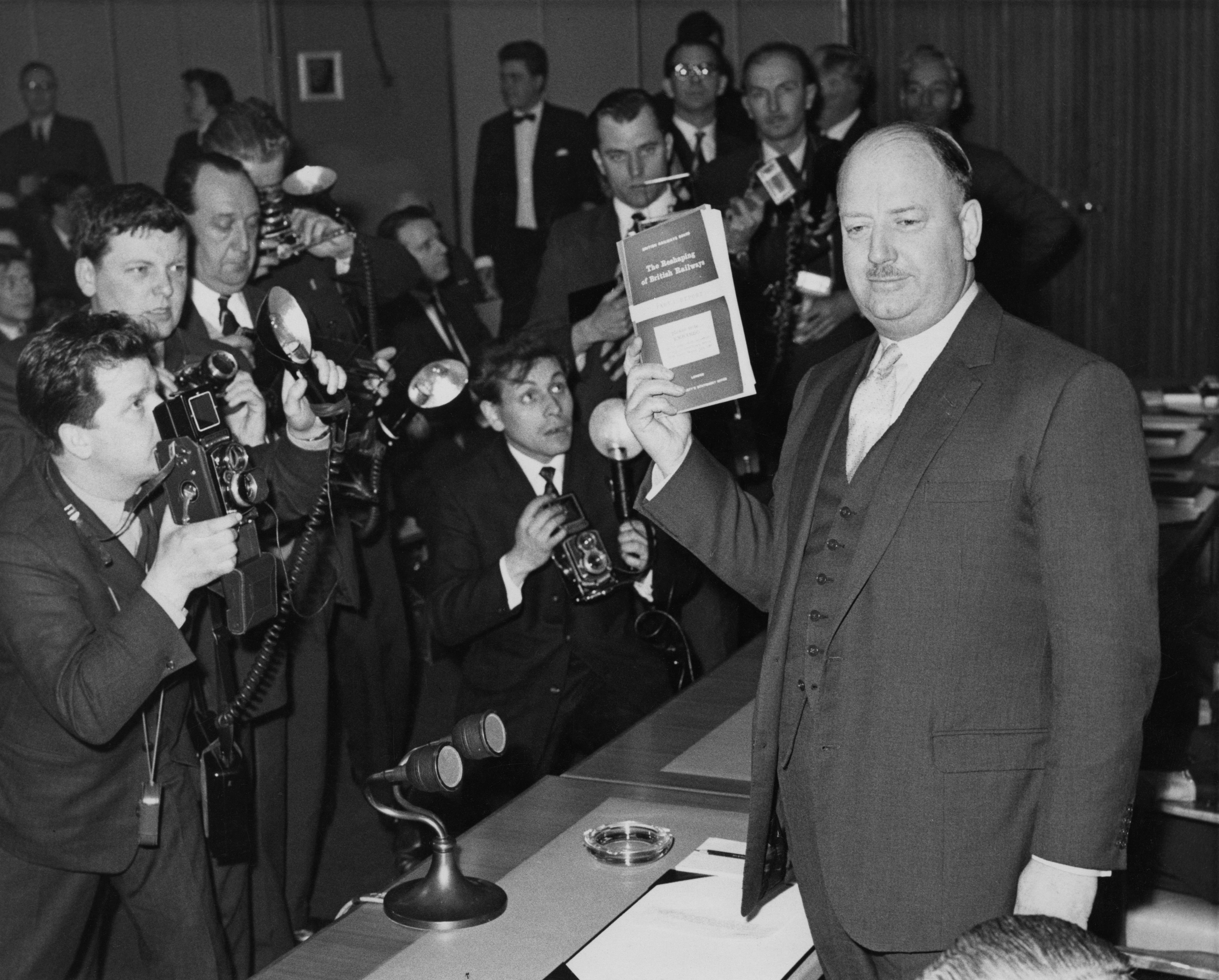
At Ipswich, the East Suffolk line connects with trains to London. Clinical new hard-riding electrics whir their way to Liverpool Street. I can’t remember the late days of steam expresses on this busy main line, their “Britannia” Pacifics bearing such stirring East Midland and East Anglian names as Boadicea, Hereward the Wake and Oliver Cromwell.
But I have ridden the line behind the last of the electric locos which gave up the ghost in 2020. Vice-Admiral Lord Nelson. Royal Anglian Regiment. Colchester Castle. Raedwald of East Anglia. Sir John Betjeman. Like their steam predecessors, and as their names told, they clearly belonged to this line. Their Swiss-built successors might belong to any railway anywhere.
John Betjeman fought a campaign on behalf of Liverpool Street station in the mid-1970s when British Rail hoped to demolish the great Victorian station along with Broad Street next door and replace both with what looked to be wilfully offensive office blocks. Trains were to have been banished underground as they were at Birmingham New Street and have been since the late 1980s at Charing Cross.
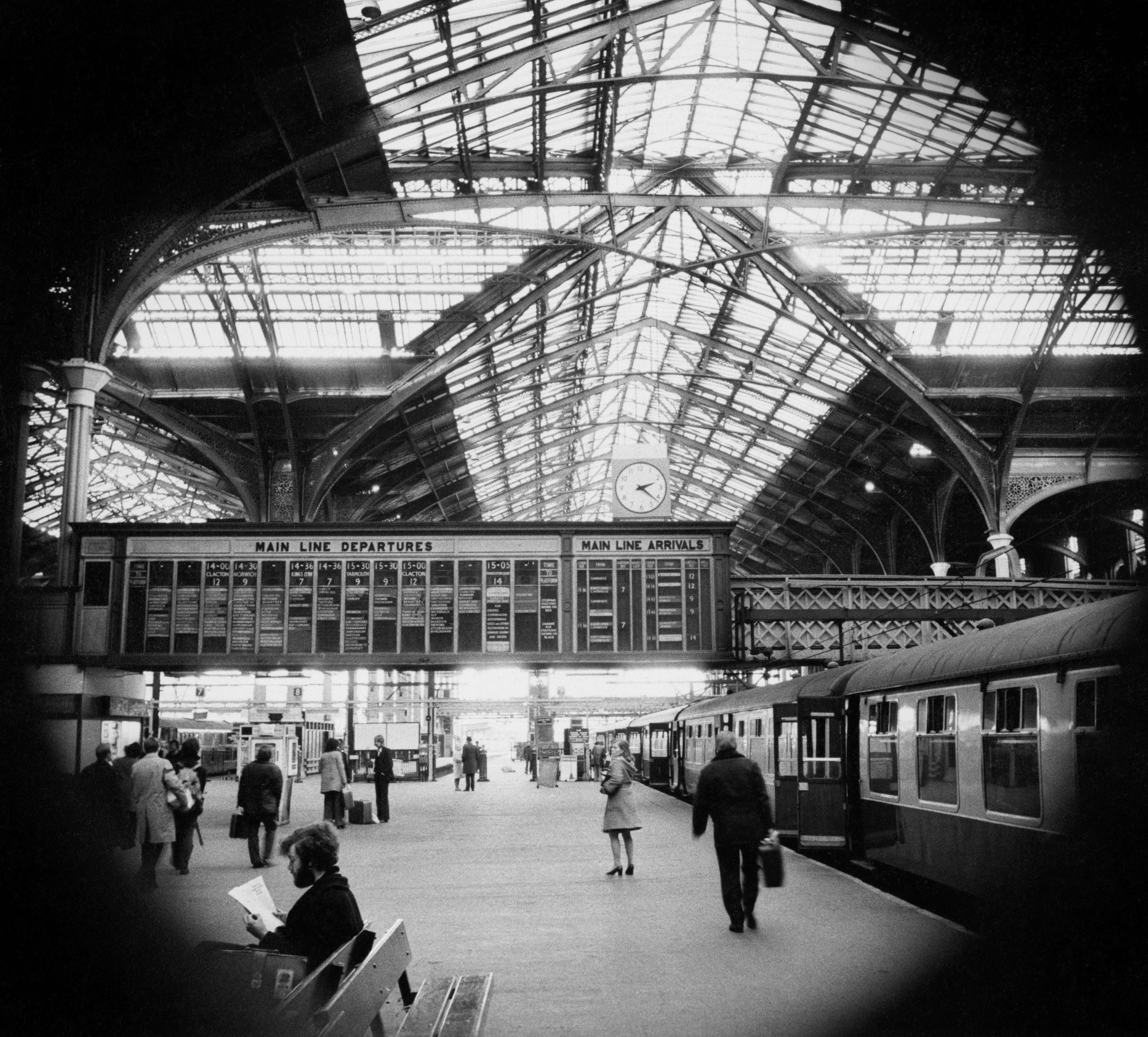
The protestors won a partial victory. A major new development of higher quality, Broadgate, was given the green light, yet spelled the end for Broad Street. From 1986, it was no longer possible to climb its oddball 1860s Lombardic Gothic stair to gain its high-level concourse and north London line trains to Richmond.
As for Liverpool Street, the British Rail architects Nick Derbyshire and Alastair Lansley, who were to take charge of the justly acclaimed remodelling and renovation of St Pancras, did a fine job in demanding circumstances.
The station’s cathedral-like iron and glass 1870s train shed was renovated and extended in identical fashion to reach the platform ends of a new glazed concourse. The less impressive 1890s train shed over the station’s eastern platforms was taken down because trains this side of Liverpool Street had to squeeze under weighty new offices fronting Bishopsgate above.
Now, a younger generation of campaigners is up-in-arms over a brazen “world-class” proposal to partially conceal the successful 1990s concourse with an artificially lit airport terminal-shopping mall-style roof, and to build a new station hotel – what was once the Great Eastern and is now the incomprehensibly named Andaz – and a towering office block.
Profiteering aside, it is hard to see who gains from this brash, Swiss-designed project. Not passengers. Not architecture. Not Liverpool Street station.
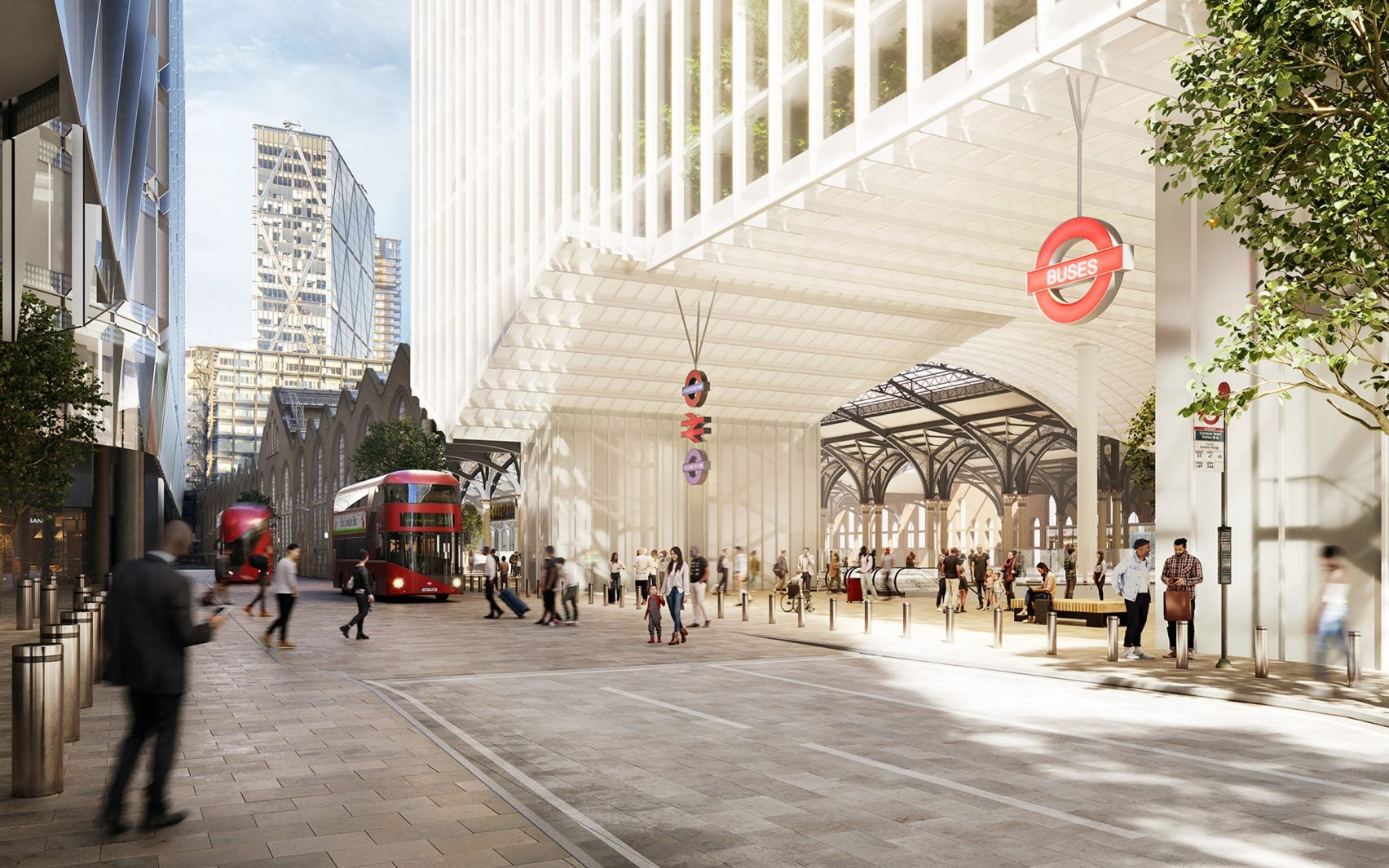
The battle for the station’s future will be played out in the coming months. The opposing factions are, for the developers, Sellar (responsible for The Shard, Britain’s tallest building), MTR, the Hong Kong government-owned Metro company that operates the Elizabeth Line, and Network Rail, and, for Liverpool Street station, fronted by Griff Rhys Jones, SAVE Britain’s Heritage, the Twentieth Century Society, Historic Buildings and Places, the Georgian Group, The Spitalfields Trust, Civic Voice, London Historians, the Victorian Society and The Betjeman Society.
‘A sorry episode’
The hemming in and building over of our major railway stations is a sorry episode.
Some will argue that we need ever more space for city centre shopping malls, offices and more shops. The more savvy might say, “surely those tall iron and glass train sheds were only necessary to allow steam and smoke from locomotives to rise and dissipate, but now we have electric trains – there is no need for such redundant space.” Surely, though, railway architecture exists as much to raise our spirits – and even our eyes from our mobile phones – as it does to house trains.
It seems sad to see eel-like electrics slithering through letterbox-like slits beneath formless hulks of global-style office towers and retail developments and on through deep shadows cast by vigorously sprouting blocks of flats on either side of the tracks. Where is the occasion – architectural, social, technological – of arrival and departure?
Have you caught a train recently from Birmingham New Street? The new Pop-style concourse architecture – a vast improvement it must be said over the resolutely grim 1960s station innocent of daylight and fresh air – is really a shopping mall sited over the platforms which remain imprisoned below. Once upon a time, Birmingham New Street, despite being shoehorned into the city centre, boasted one of the world’s great iron and glass train sheds, offering space, room and daylight for people and trains alike.
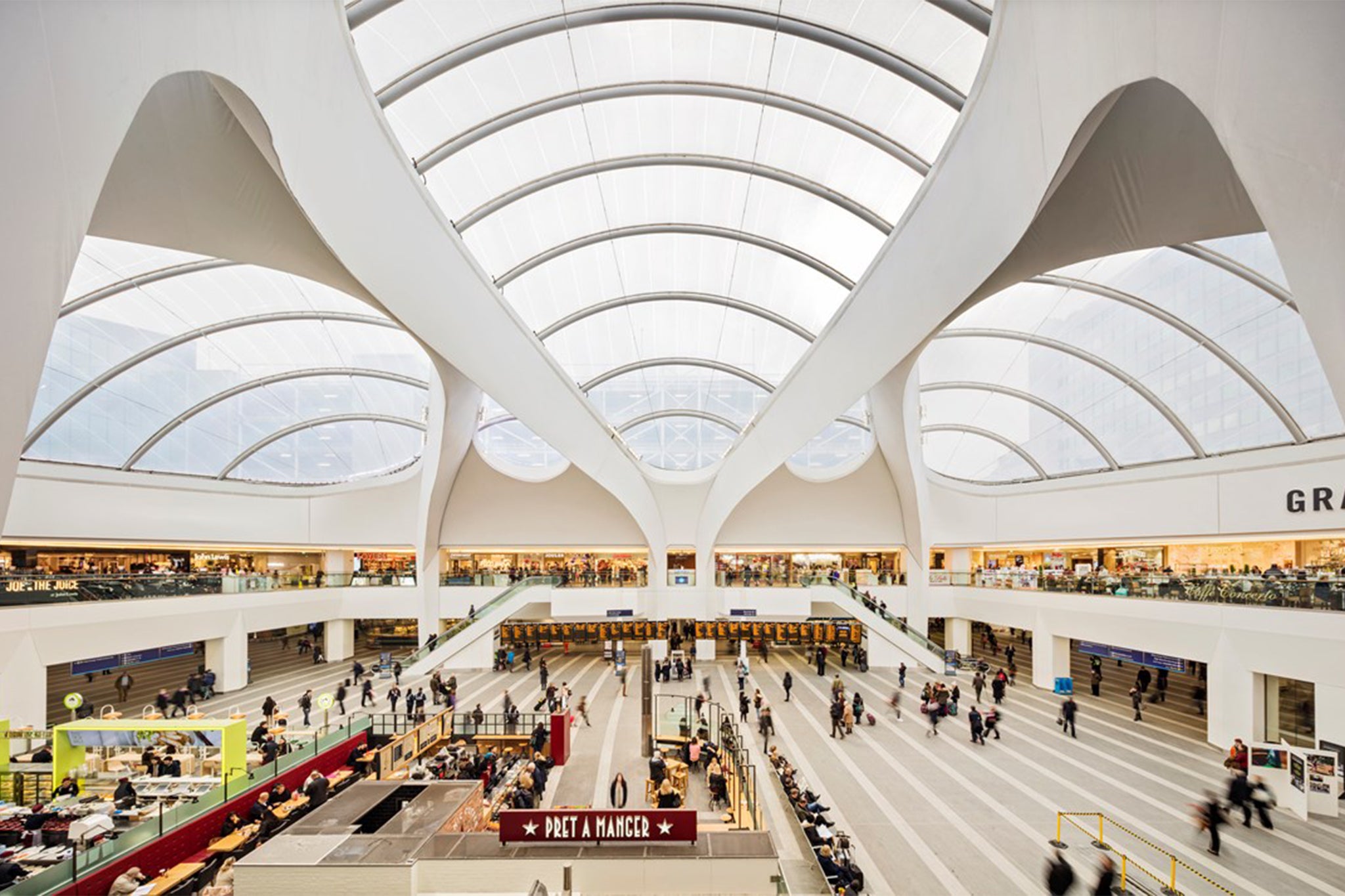
From rural byways to busy main lines, our stations could be so much more than they are, architecturally distinct and each a hub of activity providing, along with trains, useful services and shops to both commuters and local people.
They could offer workspaces for new businesses, start-ups and local ventures, cafes, clean lavatories, post office counters, dry cleaners, phone and computer repairs – you name it – ensuring as they did the staffing and safeguarding of places, with tended gardens, too, that really ought to look and feel right. Stations that are truly parts of specific places whether bucolic Somerset villages, bustling suburbs or intense city centres.
All this will take imagination, energy and very probably – a long shot – a new form of ownership of our railways.
How good it would be to campaign for new developments that would truly enhance our railways, their trains, stations and places they serve and should heighten and adorn, rather than against those that continue to threaten them with loss of jobs, loss of services, global design and general inanity. Stations should be far more than increasingly empty husks or developers’ and corporate management’s playthings.
It is time, 70 years after The Titfield Thunderbolt and 60 years after Beeching, to exorcise the ghosts of railways so badly served in recent years.
Join our commenting forum
Join thought-provoking conversations, follow other Independent readers and see their replies
Comments
Bookmark popover
Removed from bookmarks